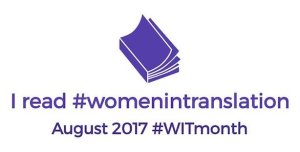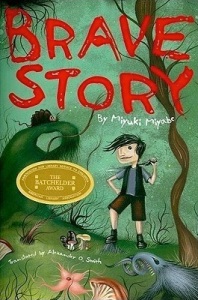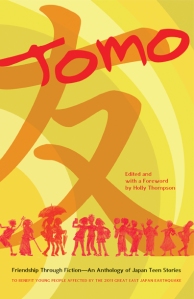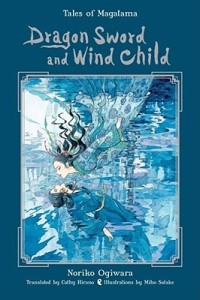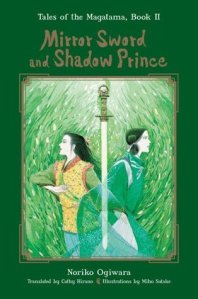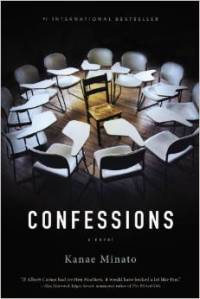By Deborah Iwabuchi, Maebashi, Japan
Avery Fischer Udagawa is the translator of a middle grade novel just out from Yonder, an imprint of Restless Books. Temple Alley Summer was written by Sachiko Kashiwaba, a well-known author in Japan. Her book The Mysterious Village Veiled in Mist influenced the Studio Ghibli movie Spirited Away.

Today, I’m talking with Avery about her work on Temple Alley Summer (TAS). In the past months, I’ve had the opportunity to do a few of these interviews. Each one brings new discoveries, and I’m enjoying it so much that I’m about ready to give up doing translation altogether and just READ translated books so I can talk to the translators about them.
TAS was thoroughly engrossing, and I sailed through the 200-plus pages. There’s no way a brief synopsis without spoilers can do it justice, but let me give it a try. What begins as a story about modern Japanese schoolchildren moves quickly into an old neighborhood legend and a mysterious statuette that can bring people back from the dead. Fifth-grade Kazu witnesses such an event and becomes privy to the truth behind Akari, a girl who suddenly appears in his class. If Akari’s story were not enough, Kazu and Akari end up in pursuit of another, older and darker fantasy, an unfinished story in a magazine that Akari read in her first life, and which Kazu is determined to find the conclusion to. The reader gets to read the story along with Kazu, and is left hanging as he searches for its author. This story within a story keeps the reader glued to the page until the very end. What happens to Akari? And what about Adi in the other story? Rest assured, all the puzzles are solved, but that’s all you’re going to get from me!

Sachiko Kashiwaba, author of Temple Alley Summer
Deborah: Avery, you were interviewed a year ago about another story by Sachiko Kashiwaba that you translated, “Firstclaw,” online at Words Without Borders. In the interview, you also talked about your impressions of TAS, so I encourage blog readers to visit that posting too.
You describe TAS as “a middle grade novel that showcases Kashiwaba’s gift for writing fairy tales, Japan-inspired fantasy, and contemporary realism, all in 52,000 engrossing words.” Can you tell me how you came to meet Kashiwaba and translate this book?
Avery: I met Sachiko Kashiwaba through translating another of her works for Tomo: Friendship Through Fiction: An Anthology of Japan Teen Stories. The opportunity to translate for Tomo and the introduction to Kashiwaba both grew out of involvement in SCBWI Japan (then called SCBWI Tokyo) and its network, and the impetus to translate TAS came from a competition connected with the Asian Festival of Children’s Content 2016. I asked the author’s permission to submit a translation of TAS to the competition and then, later, to English-language publishers.

Avery Fischer Udagawa, translator of Temple Alley Summer
Deborah: I’d like to look at the different layers of the story. The story begins with Kazu, his family, and a day at his typical Japanese school. I imagine the author wanting to bring her Japanese readers in close with a familiar setting before leading them into the supernatural. I find it difficult to translate beginnings of books that involve Japanese school life. To me, it’s always the most difficult part of a translation. The aspects of Japanese society familiar to people living here are the parts that I as a translator have difficulty explaining for non-Japan-based readers in a way that doesn’t get in the way of the original.
In this case, too, there was a certain amount of school and household terminology to get through to discover the old town map with the name Kimyō Temple—an essential plot element. After that, the story takes off. The cast of characters from Kimyō Temple Alley and the somewhat eccentric former resident, together with Kashiwaba’s fantasy, are all described—and of course translated—thoroughly and engagingly. Every time I thought I had the plot figured out, it took a step in a different direction. Any comments on parts of the translation you found more challenging, and parts that were more fun to do?
Avery: Thank you for your kind words about the translation! The opening was indeed a challenge, due to the setting’s many Japan-specific features. Young readers of English cannot be expected to know that class sections in every grade at Japanese school are numbered, or that these sections routinely subdivide into numbered small groups, or that students will remove their street shoes at school and wear indoor shoes, which they may take home during vacations. The early chapters contain many references to such details, which I needed to try to include without stopping the story to explain. It comforts me that you, too, have struggled with this! I would love to see enough Japan school stories become known in English that a bit of background knowledge can be assumed.
Another challenge, which actually arose after translating, has been conveying that religious practices and objects play a role in TAS yet do not make the story religious—just as religious activities are part of life for many people in Japan who are otherwise secular. Everyone in a community might turn up for a festival at a temple to the bodhisattva Kannon, yet not venerate Kannon otherwise. A small statuette of the Buddha might be experienced as simply a household object. A family altar, more than being a site of worship, might imply something closer to missing departed relatives.
Explaining the role of religion in Japan is hard even for scholars and for Japanese themselves. I have tried to convey that TAS unfolds in a culture that has many religious influences, which nonetheless is often nonreligious. And TAS is not a religious novel, any more than The Letter for the King and The Secrets of the Wild Wood by Tonke Dragt, translated by Laura Watkinson, are religious due to including a chapel, a monastery, a knight saying a prayer, and so on.
Deborah: This is an excellent point. As someone who has been in Japan for decades, I tend to forget about the flexibility of Japanese society when it comes to religion and how unusual it can seem.
Avery: As for especially fun parts of TAS to translate, I relished working with dialogue and narrative voice to bring out the relationships between characters. The love/hate connection between fifth-grade Kazu and his 83-year-old neighbor Ms. Minakami was fascinating to translate, because rough equivalents of their words rarely served anything like the same function in English. For example, in a spot where Kazu harps on Ms. Minakami to do something, she says urusai! to him. I could hardly render this literally as “(You’re) noisy!” because the issue is Kazu’s nagging, not his loudness. Nor could I express urusai! with the commonly used but overly blunt “Shut up!” I needed to fashion some English that preserved the level of respect a child and an elder in the same tight-knit neighborhood would show to each other, even when fighting mad. And they really do get fighting mad!
Deborah: So how did it work out in the end? What did they say to each other in English?
Avery: “Kazu. You’re driving me crazy,” she said on the phone. (かずくん、うるさい!)
“Crazy is as crazy does…” [Kazu] replied. (自業自得ってやつです。)
Deborah: Well done! Both the difficult-to-translate urusai (drive me crazy) and jigō-jitoku (crazy is as crazy does) with one fell swoop.
Avery: The embedded tale within TAS, “The Moon Is On the Left,” also offered many interesting passages to translate, including a dramatic scene with rockfalls, flames, volleys of arrows, and lightning bolts indoors! My daily life doesn’t afford many chances to say rockfalls.
Deborah: One thing I liked about TAS was the fact that it WASN’T written in five volumes—when it very well could have been. On the other hand, there are a few aspects that I’m left wondering about and that I wouldn’t mind visiting in a sequel. What happened to the Kimyō Temple statuette? Did Akari’s first-life mother ever find out she came back to life? Are there any aspects you wanted to know more about, and has Kashiwaba written any other books to follow?

Deborah Iwabuchi and Avery Fischer Udagawa
Avery: Sachiko Kashiwaba has not published a sequel to TAS; I, like you, would certainly love to read more, especially about Akari’s former mother Ms. Ando. At the same time, I appreciate that certain things remain a mystery, and I too like that the book stands alone.
Kashiwaba has gone on to publish a number of other works, including the young adult/adult novel Misaki no mayoiga (The Abandoned House by the Cape), which takes place during and after the Tōhoku earthquake and tsunami of March 11, 2011. This book has recently been made into a play, and it is also the basis of an anime movie to be released in Japan in August 2021.
Kashiwaba’s other recent works include several fantasy novels, an adaptation of the beloved Tōno monogatari folk legends, and volumes in her long-running Monster Hotel series—rollicking early readers that bring together yokai and western-style monsters.
People interested in her earlier works can check out the film Spirited Away, influenced by her debut novel The Marvelous Village Veiled in Mist; and the film The Wonderland, based on another early book. We also have a blog post here at Ihatov with excerpts from a workshop that drew on her 2010 novel Tsuzuki no toshokan (The “What’s-Next” Library).
Deborah: The titles alone are fascinating! Thanks for sharing this book and your experiences with it, Avery. I hope we’ll be seeing more of Kashiwaba in translation before too long. Meanwhile, I’m heading out to look for rockfalls.


















